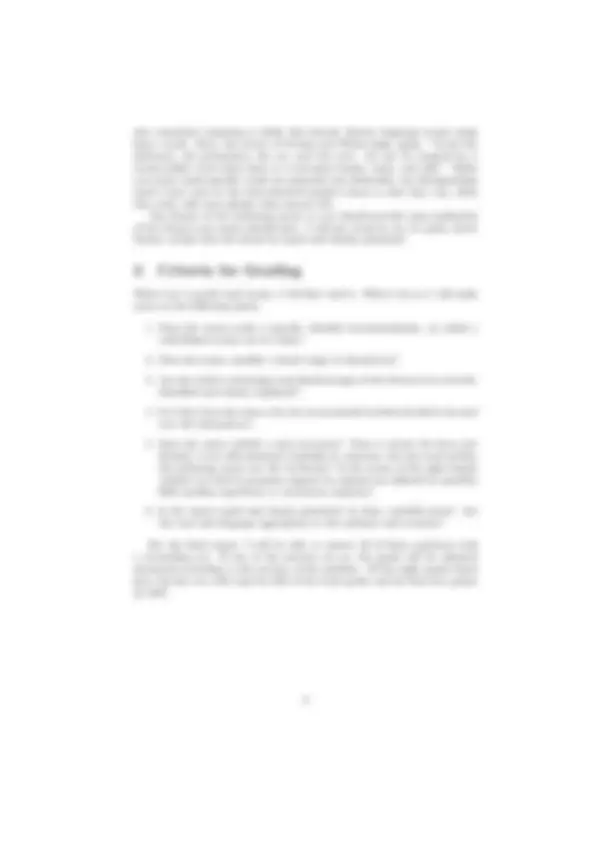



Study with the several resources on Docsity

Earn points by helping other students or get them with a premium plan


Prepare for your exams
Study with the several resources on Docsity

Earn points to download
Earn points by helping other students or get them with a premium plan
Community
Ask the community for help and clear up your study doubts
Discover the best universities in your country according to Docsity users
Free resources
Download our free guides on studying techniques, anxiety management strategies, and thesis advice from Docsity tutors
Writing guidelines for policy memos, emphasizing the importance of making actionable recommendations. It covers requirements such as making a broad selection of methods, explaining the superiority of the chosen method, and using appropriate tone and language. The document also includes criteria for grading memos based on specificity, range of alternatives, identification and explanation of advantages and disadvantages, and clarity of reasoning.
Typology: Papers
1 / 2

This page cannot be seen from the preview
Don't miss anything!


The first and most important requirement of a policy memo is that it make an actionable recommendation. The reader should be able, if persuaded by your arguments, to easily implement precisely what you recommend, with practically no details remaining to be filled in. Of course, since you know more about voting methods than a randomly se- lected citizen, I will expect you to have a tolerably broad selection of methods to consider, and you may even wish to construct your own method (e.g. use this method, and use that one for a runoff/tiebreaker/etc.) You should also explain why your method — whatever it is — is superior to a tolerably broad selection of others. Of course, any such judgement will be subjective in that two people may differ on whether one particular advantage outweighs one particular disad- vantage. Still, you should be acquainted with the advantages and disadvantages of your chosen method, and ready to say why you think the advantages are good and the disadvantages are acceptable. Your tone and language throughout should be appropriate for a memo from a staffer to the majority and minority counsels. This means that usage of language should be literate (that is, standard grammar and spelling should be used, and words should be well-chosen and communicative), respectful (but not servile), and efficient. With regard to efficiency, the advice of Strunk and White (Elements of Style, 4ed) is to be followed religiously:
Vigorous writing is concise. A sentence should contain no unnec- essary words, a paragraph no unnecessary sentences, for the same reason that a drawing should have no unnecessary lines and a ma- chine no unnecessary parts. This requires not that the writer make all sentences short, or avoid all detail and treat subjects only in outline, but that every word tell.
In formal writing, the third person is usually preferred over the second, and slightly over the first, but avoiding artificial language is more important. Also, the active voice is usually preferred over the passive, but again, good expression is paramount. For instance, I could not figure out an equally honest and expressive way to write the last two sentences in the active voice. It is
also sometimes tempting to think that formal, literate language means using fancy words. Here, the advice of Strunk and White helps again: “Avoid the elaborate, the pretentious, the coy, and the cute. Do not be tempted by a twenty-dollar word when there is a ten-center handy, ready, and able.” While over-used, under-specific words are generally less desireable, one distinguishing mark I have seen in the best-educated people I know is that they can, when they wish, talk more plainly than anyone else. The format of the initiating memo to you should provide some indication of the format your memo should have. I will not, however, be too picky about format, except that the memo be typed and cleanly presented.
When I go to grade each memo, I will first read it. When I do so, I will make notes on the following issues:
For the ideal report, I will be able to answer all of these questions with a resounding yes. If any of the answers are no, the grade will be adjusted downward according to the severity of the problem. Of the eight points listed here, the last two will count for 20% of the total grade, and the first four points for 80%.